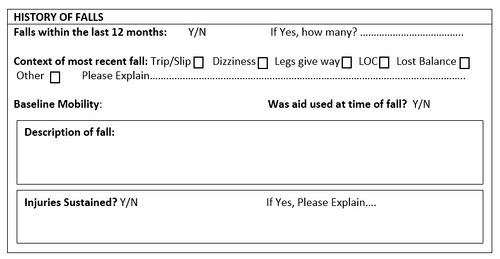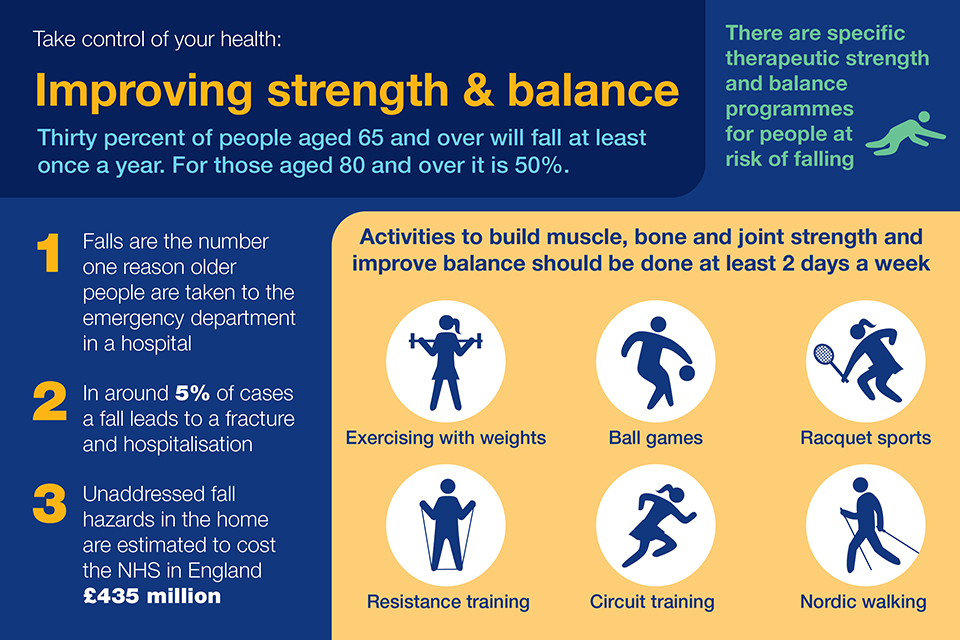Not known Details About Dementia Fall Risk
Table of ContentsThe Main Principles Of Dementia Fall Risk Not known Facts About Dementia Fall RiskThe smart Trick of Dementia Fall Risk That Nobody is DiscussingThe Best Guide To Dementia Fall Risk
A fall threat evaluation checks to see just how likely it is that you will certainly fall. It is primarily provided for older adults. The assessment usually includes: This includes a collection of concerns concerning your overall health and if you've had previous drops or troubles with balance, standing, and/or strolling. These tools check your toughness, equilibrium, and gait (the way you stroll).STEADI consists of testing, examining, and treatment. Interventions are suggestions that may lower your danger of falling. STEADI consists of three steps: you for your risk of succumbing to your danger variables that can be boosted to attempt to protect against drops (as an example, balance troubles, damaged vision) to minimize your risk of dropping by using effective methods (for instance, providing education and resources), you may be asked a number of questions consisting of: Have you dropped in the past year? Do you feel unstable when standing or walking? Are you bothered with falling?, your copyright will test your strength, balance, and gait, making use of the adhering to autumn assessment devices: This test checks your stride.
You'll rest down once again. Your supplier will certainly check the length of time it takes you to do this. If it takes you 12 secs or more, it might imply you go to greater threat for a loss. This test checks toughness and equilibrium. You'll sit in a chair with your arms went across over your chest.
The settings will obtain more challenging as you go. Stand with your feet side-by-side. Move one foot midway onward, so the instep is touching the huge toe of your various other foot. Move one foot fully before the other, so the toes are touching the heel of your various other foot.
The Ultimate Guide To Dementia Fall Risk
A lot of falls occur as a result of several adding elements; therefore, managing the threat of dropping starts with determining the aspects that contribute to fall threat - Dementia Fall Risk. A few of the most pertinent risk elements consist of: History of prior fallsChronic clinical conditionsAcute illnessImpaired gait and equilibrium, reduced extremity weaknessCognitive impairmentChanges in visionCertain high-risk medicines and polypharmacyEnvironmental factors can likewise raise the risk for falls, including: Poor lightingUneven or harmed flooringWet or unsafe floorsMissing or harmed handrails and order barsDamaged or incorrectly equipped equipment, such as beds, wheelchairs, or walkersImproper usage of assistive devicesInadequate supervision of individuals staying in the NF, including those that display aggressive behaviorsA effective fall threat administration program needs a detailed medical evaluation, with input from all participants of the interdisciplinary team

The treatment strategy should also include treatments that are system-based, such as those that advertise a risk-free environment (proper illumination, handrails, get hold of bars, etc). The effectiveness of the interventions must be evaluated regularly, and the treatment strategy modified as needed to reflect adjustments in the loss danger assessment. Applying an autumn risk administration system using evidence-based ideal technique can decrease the occurrence of falls in the NF, while restricting the possibility for fall-related injuries.
The Basic Principles Of Dementia Fall Risk
The AGS/BGS guideline recommends evaluating all grownups aged 65 years and older for fall danger each year. This testing contains asking people whether they have actually fallen 2 or more times in the past year or looked for clinical attention for a fall, or, if they have not dropped, whether they really feel unstable when walking.
Individuals that have actually dropped as soon as without injury must have their balance and stride examined; those with gait or balance irregularities should obtain extra evaluation. A history of 1 fall without injury and without gait or balance issues does not necessitate more analysis past continued yearly fall threat testing. Dementia Fall Risk. A fall danger analysis is needed as component of the Welcome to Medicare evaluation

The 5-Second Trick For Dementia Fall Risk
Recording a falls background is one of the top quality signs for loss avoidance and monitoring. Psychoactive medicines in specific are independent forecasters of drops.
Postural hypotension can often be relieved by lowering the dose of blood pressurelowering medicines and/or stopping medications that have orthostatic hypotension as a side effect. Use above-the-knee assistance pipe and sleeping with the head of the bed raised might additionally minimize postural reductions in blood pressure. The advisable components of a fall-focused checkup are revealed in Box 1.

A yank time above or equal to 12 seconds suggests high autumn danger. The 30-Second Chair Stand examination examines lower extremity stamina and equilibrium. Being unable to stand from a chair of knee elevation without making use of one's arms shows boosted autumn threat. The 4-Stage Balance examination evaluates static equilibrium by having blog here the individual stand in 4 positions, each progressively extra challenging.